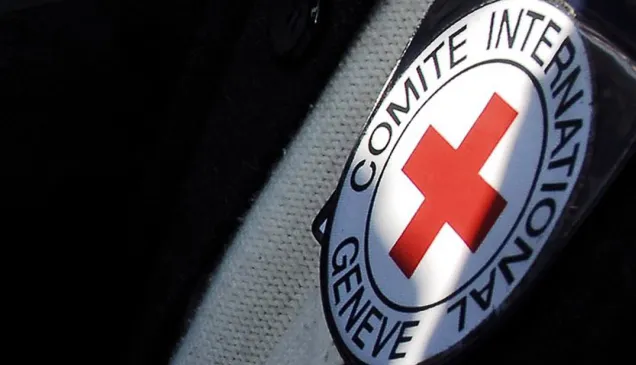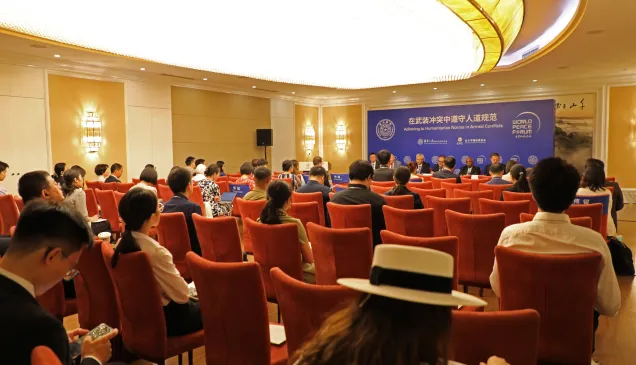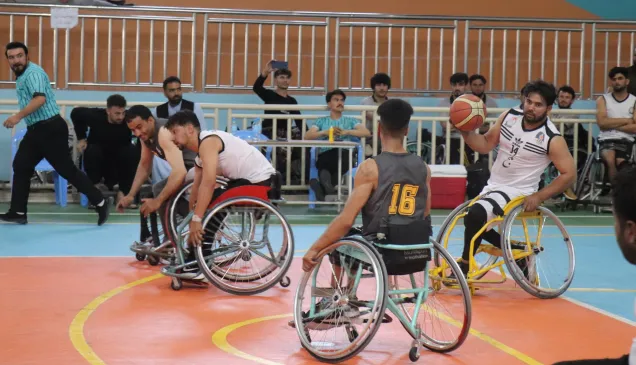"I still look for them"

Helping Mozambican families in need after Cyclones Idai and Kenneth
It was the middle of the night when Gabriel Salvador Mabunda awoke to the sound of heavy rain and howling wind. Water was trickling into his home. He woke up his wife and children and the family of 12 set out into the dark on foot, looking for higher ground.
Amid rising waters, they came across a Mafurera tree and climbed it, but the relief they found was short-lived. The branches began to break under forceful gusts of wind. Gabriel managed to grab some members of his family but was separated from the rest.
Gabriel came across people searching for survivors who took him and his family to a safe place. The next day, his wife was also brought to the same location with their children, but one was missing.

Gabriel Salvador Mabunda is searching for four of his family members. They were separated when Cyclone Idai stuck central Mozambique in March 2019.
She shared the sad news with Gabriel: she tried to get all of the children in a tree, but one of their daughters, terrified that her mother was leaving her, jumped out of the tree and was swept away.
I spoke to Gabriel two weeks after Cyclone Idai tore through central Mozambique in mid-March. They were living in a school alongside other families who lost their homes. He was still looking for his daughter. Three other relatives were also missing.
"In my mind, I've told myself that I've lost them because so many days have passed but I keep going to look for them," he told me. "Even without hope, I still look for them."
It's been six months and my conversation with Gabriel is one I'll remember forever. My name is Khatija Nxedlana and I work for the International Committee of the Red Cross in southern Africa. One week after Idai struck I travelled to Mozambique with an ICRC forensics team to help communities in need.
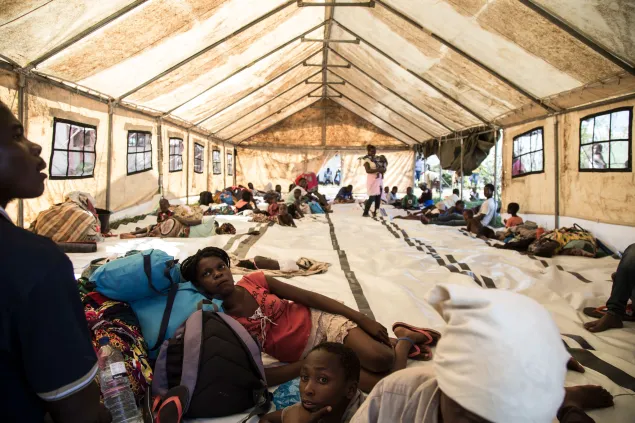
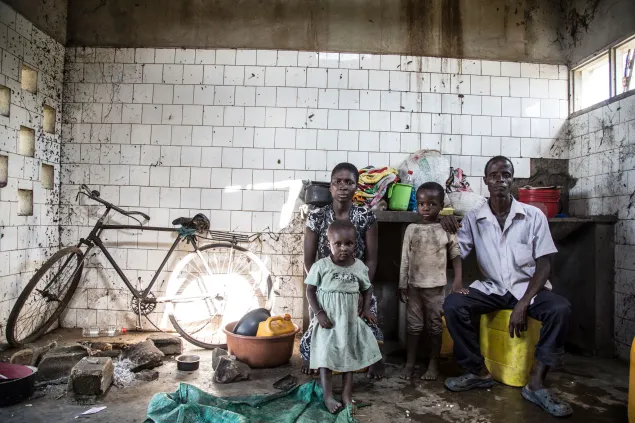
The needs were huge. Because of the storm, more than 1,000 people died and more than 3 million lives were affected across Mozambique, Zimbabwe and Malawi.
The ICRC forensics team received many reports of bodies. The further we moved out of the town of Chimoio, our base of operations, the more destruction we saw.
Mud stained the walls of houses, showing how high the water had reached. Debris hung over electricity lines. Roads had collapsed, cutting off access to some villages. Mud even swallowed our Land Cruiser, and we weren't able to free it for more than nine hours. Our experience was only a brief glimpse of the reality faced by residents.
Farmers named Kobus, Mike and Gilles hosted us overnight, sharing a home-cooked meal. A group of 15 other local community groups had tents set up in the garden to debrief the day's clean-up work and plan for the next. They were community first responders that had been rescuing families from trees and accommodating them on their farm. Their kindness and generosity was humbling.
The next morning a tractor pulled our car out. From then on we walked whenever the road turned muddy.
Safe and Dignified Burials
We quickly learned that community members were burying people wherever they were found. The forensics team wanted to access as many of these sites as possible to share some basic skills on the safe recovery of human remains and to ensure dignified and respectful burials. They were also able to deliver protective gear such as gloves, body bags, digging tools and grave markers to help ensure the burial sites are not disturbed at a later stage.
Tens of thousands of people in #Mozambique have been left homeless by the destruction caused by #CycloneIdai. Even as the water levels go down, many communities are stranded and living completely exposed to the elements. https://t.co/5O6pPek1fJ pic.twitter.com/PWtaeCAULP
— ICRC Africa (@ICRC_Africa) April 4, 2019
We walked knee-deep in murky muddy water feeling wary of crocodiles and hippos that have claimed the lives of locals. The mud beneath the water was so thick, it sucked the boots right off my feet. Each footstep required effort, each kilometre felt like ten, and the heat was nearly unbearable. When a community member would encouragingly point, indicating that the destination was within reach, I quickly grew to understand that could mean the village was still ten kilometres away.
As floodwaters began to recede, more and more bodies began to surface.
I remember the morning of March 29 vividly, a community member in Matarara, not far from Dombe, reported finding another body.
We drove to the furthest place we could get by car and then, on foot, proceeded to the body. Amongst our group was Manuel Samuel, Teresa Samuel and Maria Gimo, who were searching for their missing relative, 16-year-old Faustina Araujo.
Together, we walked some six-kilometres until we reached a lake. A community member pointed to the middle, indicating the location of the human remains.
ICRC forensic specialist Stephen Fonsenca plots a burial site in Dombe, #Mozambique.
— ICRC Africa (@ICRC_Africa) March 27, 2019
Community members showed us three sites where they buried their neighbours and loved ones who died as a result of #CycloneIdai's impact. pic.twitter.com/09U1N5QLjo
On a makeshift canoe fit for two, Teresa and a community member paddled out. From the bank, I saw her nod her head before bursting into tears. Teresa wailed on her way back to the bank and while embracing her family.
Stephen Fonseca, ICRC's regional forensics manager, then went out to recover the body. The mood was sombre as a dozen men dug a grave. Everything happened so quickly, there was barely time for me, a bystander, to absorb it all.
Amidst their loss, the family finally had the closure they were seeking. They could finally stop worrying and wondering. They had given Faustina a dignified and respectful burial. They found a semblance of peace.

Maria Gimo mourns the death of her daughter in law Faustina Araujo. Faustina had been missing since Cyclone Idai stuck central Mozambique in March 2019. It was only two weeks later that her body was found and the family positively her.
A second storm: Cyclone Kenneth
While communities in central Mozambique were still recovering from Cyclone Idai, a second storm predicted to be even stronger, was looming. Just six weeks later, Cyclone Kenneth made landfall, this time hitting the northern Cabo Delgado province, an area where residents already face uncertainty over armed violence.
The floods affected Pemba City, Macomia, Quissanga and Ibo districts, but this time everyone was a little more prepared with many communities having been evacuated.
As images of the devastation that #CycloneKenneth brought start to emerge, the ICRC remains concerned about people in #Mozambique who have lost their homes and are exposed to the downpour, and to the possibility of flooding from rivers in the coming hours and days. pic.twitter.com/4yNyhFQkZU
— ICRC Africa (@ICRC_Africa) April 28, 2019
On the return flight to Mozambique, I sat next to a gentleman from Pemba. "Boa tarde," he said, greeting me in Portuguese as he fastened his seat belt. He explained that the armed violence in his home area had stolen people's freedom. "I used to take my kids for weekend visits outside Pemba; we can't do that anymore," he shared.
Once on the ground, ICRC teams distributed relief supplies to communities on islands, which required a four-hour boat ride. I couldn't help but admire the beauty of the islands even while remembering that its inhabitants faced so much destruction.

Volunteers from the Mozambique Red Cross Society ferry relief supplies from a speed boat onto Matemo Island where the residents lost their homes and belongings when Cyclone Kenneth struck in April 2019.
To date, the ICRC has provided essential relief supplies to over 3,000 families that lost their homes and belongings due to Cyclone Kenneth while working alongside the International Federation of Red Cross and Red Crescent Societies (IFRC) and the Mozambique Red Cross Society. In central Mozambique, the ICRC and CVM provided essential relief supplies to almost 10,000 families, food assistance to over 22,000 families as well as seeds and agricultural tools to over 13,000 families to help them rebuild their lives.
As we reflect on the tale of two tragedies, six months after Cyclone Idai and five months after Cyclone Kenneth, we continue to support the communities as they rebuild their lives. While many re-plant their crops and rebuild their homes, for those who lost loved ones, home will never be the same again.
I often think about Gabriel and the story he told me about his daughter. I wonder if he found her, I wonder if he found the three other family members he was searching for, and I wonder how long the trauma will last.

"We have received so much help, blankets and everything and we are very grateful," says Tima Sharif who lives on Matemo Island in Mozambique. Matemo Island is one of the areas severely affected by Cyclone Kenneth.

